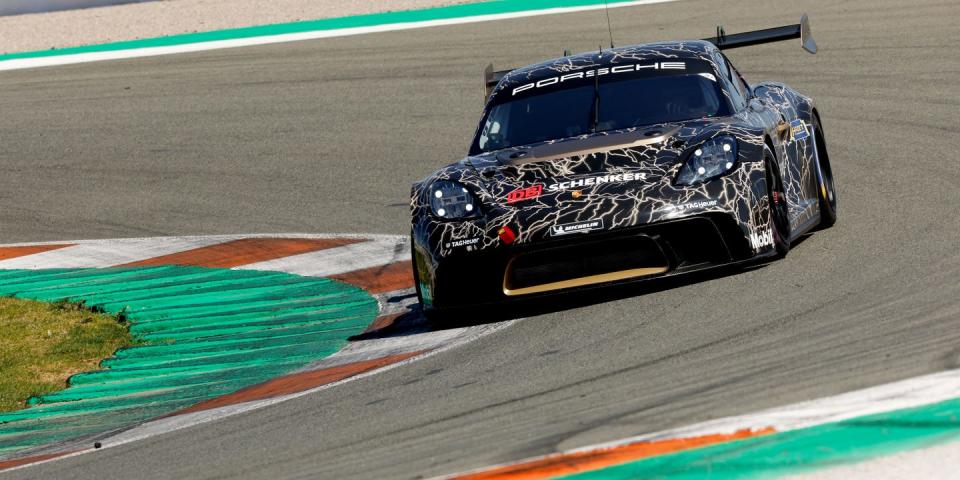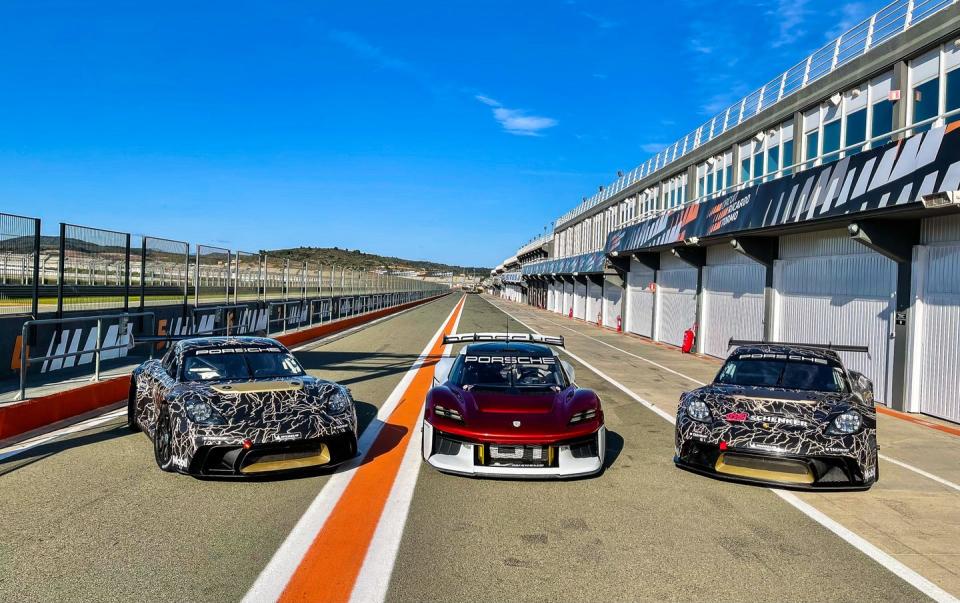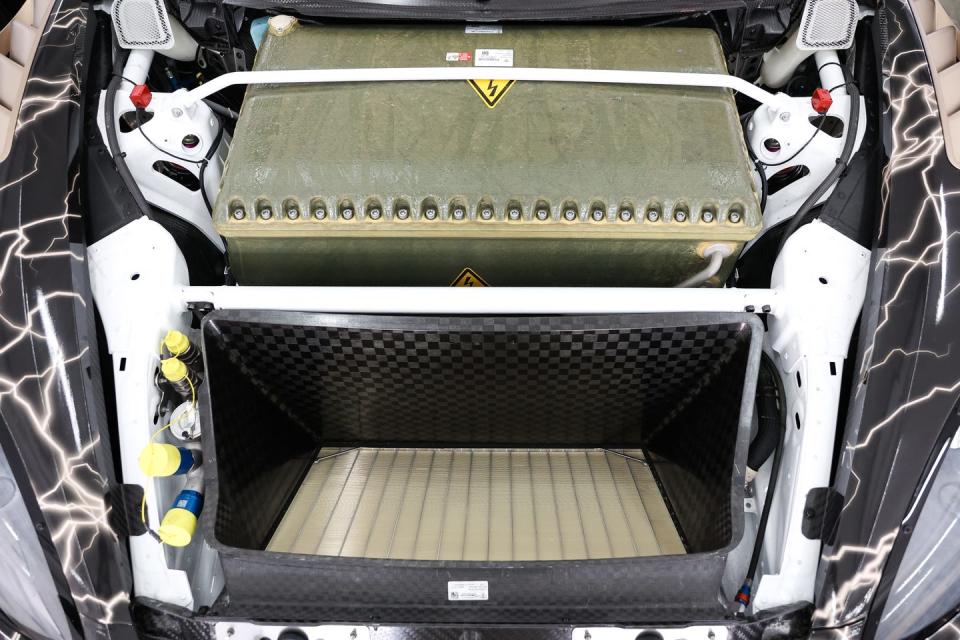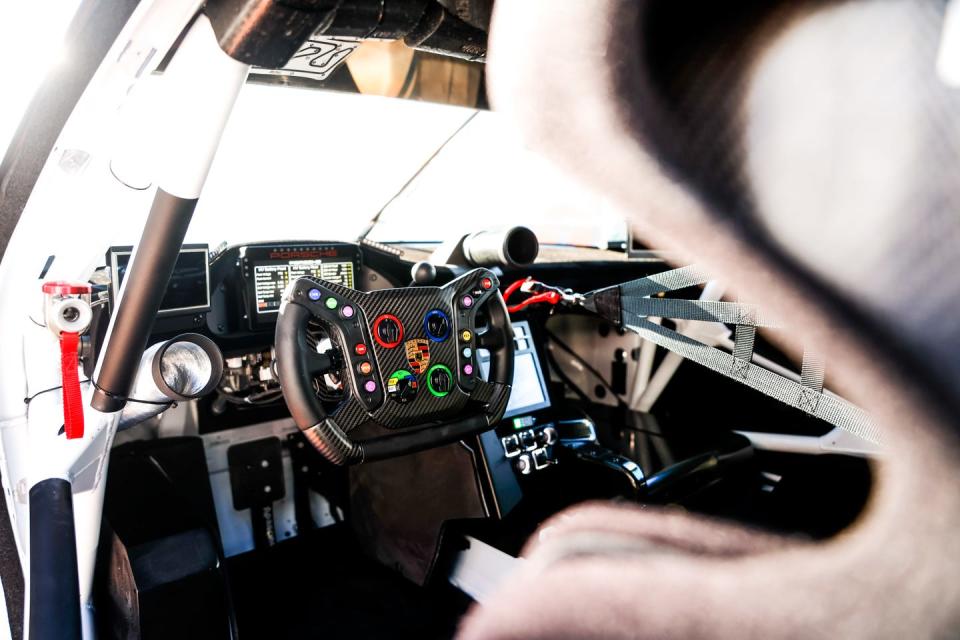The Porsche GT4 E-Performance Is a Radical Step For EV Race Cars

At first glance, it looks like a Cayman GT4. All the cues are there, the low stance, the mid-engine proportions, the wider hips, the extended splitter, the wing. But it’s not a Cayman GT4. Porsche won’t even call it a Cayman. This is the GT4 E-Performance, Porsche’s vision for an all-electric customer race car.
While the gorgeous Mission R Concept showed what an EV Porsche race car could look like, a limiter at 70 mph means it’s more of a technology showpiece. The GT4 E-Performance is a rolling lab. It and the Mission R share a powertrain, but the E-Performance is the real, unlimited prototype for the future of electric GT racing. This car predates the Mission R, with Porsche secretly beginning testing in 2021. The car was even tested not-so-secretly alongside a gas-powered GT4 Clubsport, but nobody noticed. Probably because the gas engine drowned out the EV.

Not that the E-Performance is quiet. The straight-cut gears make it sound like a driving buzzsaw. In qualifying mode it has 938 horsepower delivered through two electric motors, one on the front axle, one on the rear (the more modest race mode has 536 hp to extend battery life). The huge brakes -- 15 inch front rotors with six-piston calipers, 14 inch rear with four-piston calipers -- are by-wire to allow for brake blending, an attempt to make the transition from regen to the actual braking system feel natural. They’re also there to heave the car down from its top speed of nearly 180 mph. It weighs about 3500 pounds, 500 pounds more than the ICE-powered Cayman GT4 RS Clubsport. Much of that added weight is on the front axle thanks to the addition of the electric motors.

Both the Mission R and the GT4 E-Performance are based on a modified GT4 Clubsport chassis with parts from the 911 RSR race car. It’s 6.5 feet wide and has aggressive aero, but the real emphasis is cooling. The battery packs sit behind and next to you, and while the 900 volt system ensures that the 82 kWh batteries charge quickly, it also generates massive amounts of heat. The cooling solution is unique, a single unit up front that provides oil cooling to the batteries and electric motors. That deep duct in the hood houses the radiator that keeps temperatures in check.

The cockpit is shockingly normal. If you’ve glanced inside any recent race cars, it’ll immediately be familiar. There is a small screen in the center console that provides the state of charge, which is new, but otherwise this is still a race car. It’s cramped, a cage taking up a large amount of real estate. One thing that is new is getting out.
This is a hugely powerful electric car, and any breach of the battery is exceedingly dangerous. Exiting the car in a situation like that requires an actual leap from the car, ensuring that you don’t touch the ground and the car at the same time. Practicing that jump, which ends up being more like a child trying to jump over a big puddle, is an easy way to look like a bit of an idiot.

Porsche gave me three sessions in the car at Circuit Ricardo Tormo, outside Valencia, Spain. Two six-lap runs in the lower-powered race mode and a brief four-lap session in the full-powered qualifying mode. Even with low power, it’s a rocket.
The added weight, particularly up front, has an obvious impact on how it needs to be driven. During a ride with Timo Bernhard, the two-time overall Le Mans winner and the outright record holder on the Nurburgring Nordschleife, we talked about what the driver needs to do to get the best out of it, most of which focused on braking. First, the brakes, which don’t have ABS, don’t like to be tromped on. A more delicate foot will get the most out of them. Second, it wants to be trail-braked. Get the weight on the nose and help it turn, or else it’ll want to plow straight on through a corner.

 Yahoo Autos
Yahoo Autos 